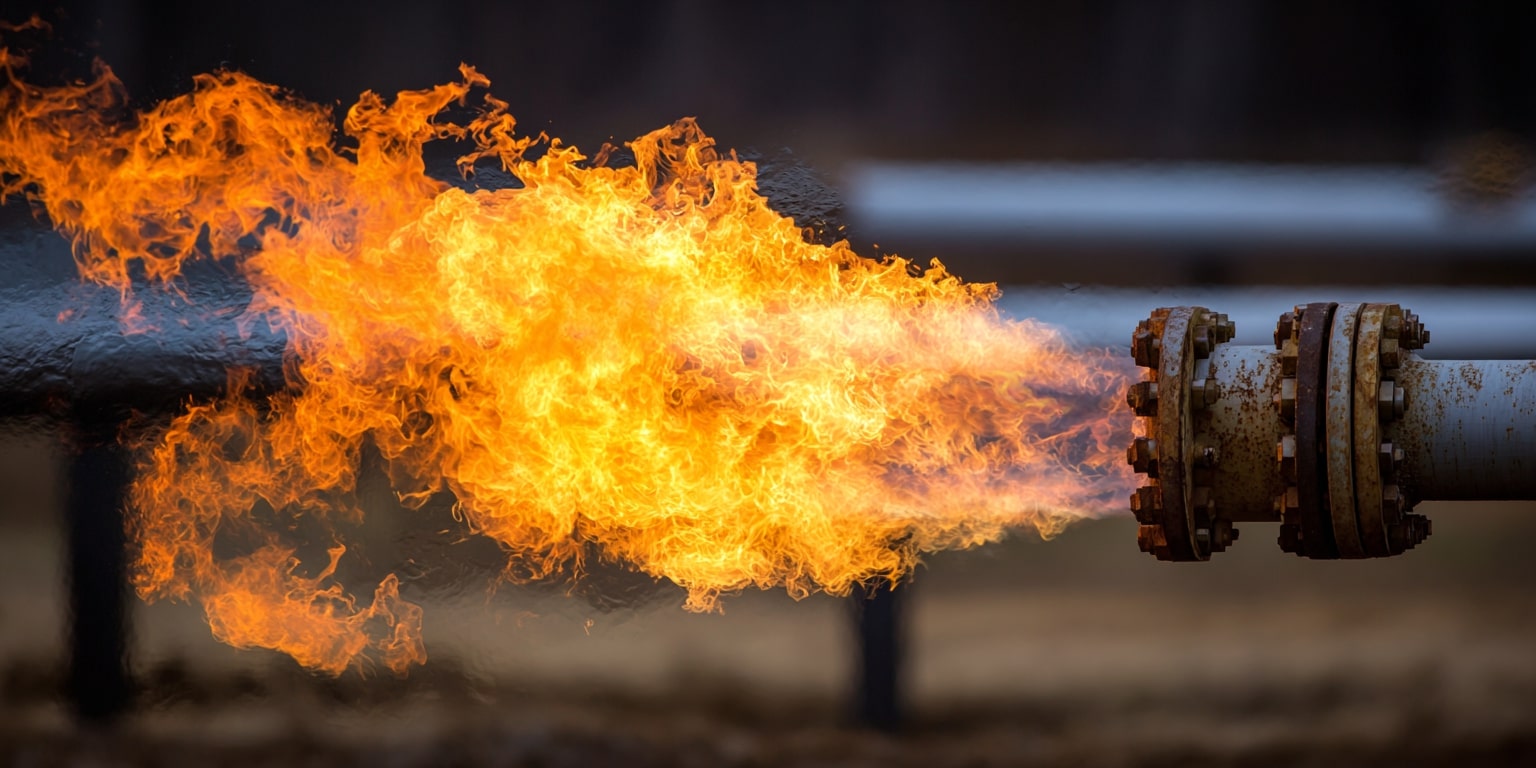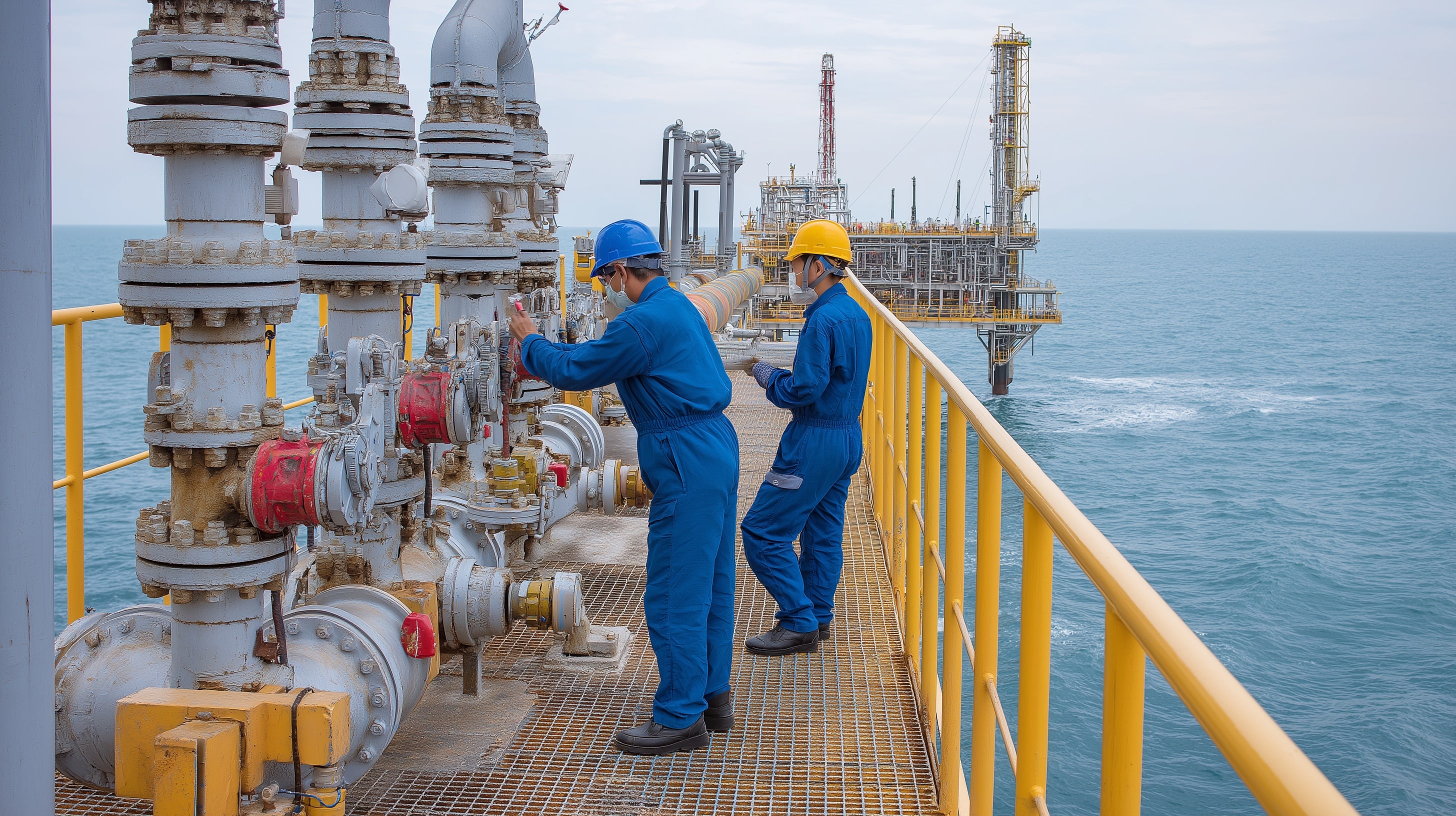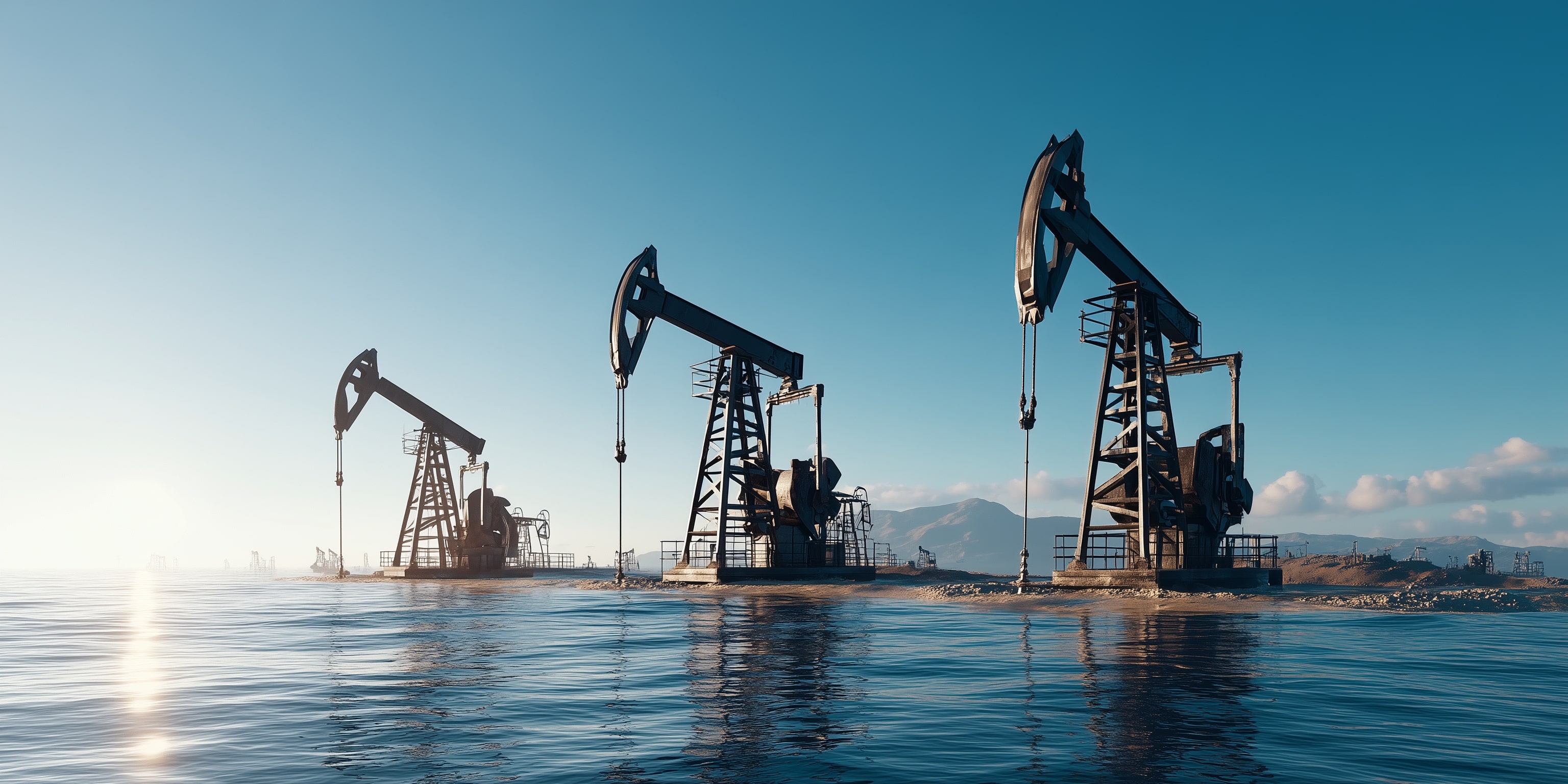
Natural Gas Price Forecast - NG=F Steadies at $3.00 as U.S. Export Boom Tests Old Fields
With Trump driving record LNG exports and Golden Pass LNG nearing startup, NG=F faces pressure from aging basins, pipeline shortages, and rising infrastructure costs | That's TradingNEWS
Natural Gas (NG=F) Struggles to Hold $3.00 as U.S. Export Push Collides With Aging Fields and Infrastructure Bottlenecks
Natural Gas (NG=F) prices remain anchored near $3.00 per MMBtu, after an early-week dip reflected market hesitation over supply constraints and global demand shifts. Traders positioned for a rebound toward $3.60–$4.00 as winter draws closer, but the structural backdrop in the U.S. gas industry has grown more complicated. President Donald Trump’s administration has made liquefied natural gas (LNG) exports a centerpiece of its trade agenda, tying international deals to energy commitments. Yet the U.S. faces a dilemma: while LNG export capacity could double by 2030—from 14 billion cubic feet (Bcf) per day in mid-2025 to as much as 27 Bcf/day—its major basins are aging, and pipeline infrastructure remains woefully insufficient to deliver those volumes without inflating prices at home.
U.S. Ambitions Meet Field Fatigue as Haynesville Production Plateaus
The U.S. shale revolution that once flooded the market with cheap gas is hitting geological limits. The Haynesville Shale, long the cornerstone of LNG supply, has been producing continuously since 2008. Analysts from Enverus estimate the region now holds only about 614 top-tier drilling locations, roughly one year’s worth of prime wells. Producers have extracted most of the “sweet spots,” forcing them to either accept thinner returns or wait for prices to rise. To sustain export and domestic demand simultaneously, Haynesville would need to raise production by one-third, covering roughly 40% of the expected LNG expansion. That would require prices near $5.00 per MMBtu, well above the current $3.00 mark, to make less-productive areas economical.
Energy executives warn that the basin’s discipline is clashing with policy ambition. Drillers, pressured by investors to prioritize dividends and buybacks after years of overproduction-induced bankruptcies, are reluctant to ramp up aggressively. As Tom Loughrey of Flow Partners observed, “If you have scarcity of resources and can’t make it work financially, you wait for higher prices.”
Pipeline Shortages Strain the Export Engine
The gas boom that made America the world’s top LNG exporter now faces its own logistical trap. The Permian Basin, rich in associated gas, continues to flare and choke back production because of limited takeaway capacity. Meanwhile, the massive Appalachian Basin in the Northeast is hampered by political and environmental hurdles that block new pipelines to the Gulf Coast. This bottleneck forces LNG terminals in Louisiana and Texas to lean disproportionately on Haynesville volumes. Without fresh investment in midstream infrastructure, those pipelines risk becoming the weak link that curtails export growth.
Executives at Aethon Energy and Chesapeake Energy (NASDAQ:CHK) have repeatedly stressed the need for new trunk lines to prevent regional shortages and price spikes. “We want a stable long-term price,” said Aethon’s Gordon Huddleston, “not demand destruction from volatility.” The balance is delicate: an extra $1 increase in gas prices could make U.S. LNG less competitive globally, but without that premium, domestic output cannot sustain the export surge.
Golden Pass LNG Startup Adds Global Pressure
The impending start of the Golden Pass LNG project in Texas—a joint venture partially backed by QatarEnergy and ExxonMobil (NYSE:XOM)—has rippled across the Atlantic. European benchmark Dutch TTF gas futures dropped 1.3% to €31.94/MWh as traders priced in the expected U.S. supply flood. Analysts at ANZ Bank warned that the project could push the global LNG market into surplus next year, easing Europe’s post-crisis energy anxiety but potentially capping U.S. domestic prices around $3.00. However, any delay or operational hitch could swing the pendulum sharply, reigniting fears of a supply crunch as winter demand peaks.
Domestic Bills Soar Even as Wholesale Gas Prices Stay Low
Paradoxically, even as NG=F remains near multi-year lows, U.S. households are paying record-high gas bills. Data from the American Gas Association (AGA) show utilities spent $49.1 billion on infrastructure upgrades in 2023—up 50% year-over-year—driven by post-2010 safety mandates. In states like Pennsylvania and Illinois, ratepayers now spend two-thirds of their utility bills on construction, delivery, and taxes rather than fuel. Companies such as PECO Energy in Philadelphia are investing $1.8 billion over five years to replace aging pipelines, with regulators passing those costs to consumers.
This structural inflation in delivery costs offsets the benefits of lower commodity prices. In Chicago, delivery rates have doubled over the past decade, while in Baltimore they have tripled, according to Public Interest Research Group estimates. Regulators in Massachusetts have begun overhauling replacement programs, prioritizing repairs over complete rebuilds to save customers up to 17% per month.
Read More
-
PFFA ETF Nears $21.50 as Rate Cuts and 9.49% Yield Spark Renewed Demand
29.11.2025 · TradingNEWS ArchiveStocks
-
XRPI and XRPR ETFs Ignite Ripple’s Institutional Rally as Inflows Near $1B and XRP Holds $2.20
29.11.2025 · TradingNEWS ArchiveCrypto
-
Natural Gas Price Forecast - NG=F Blasts to $4.85 as Demand Surge Fuel Multi-Month Breakout
29.11.2025 · TradingNEWS ArchiveCommodities
-
USD/JPY Price Forecast - Yen to Dollar Slides to 156.10 as Yen Strengthens on Fed Cut Expectations
29.11.2025 · TradingNEWS ArchiveForex
Trump’s Energy Strategy Fuels Export Optimism and Domestic Anxiety
President Trump’s goal of halving U.S. energy prices while simultaneously doubling LNG exports is increasingly seen as irreconcilable. Analysts at Wood Mackenzie argue that achieving both requires contradictory conditions: stable low domestic prices for voters and higher global prices to finance drilling expansion. The administration’s outreach to Europe, India, and Japan includes LNG supply commitments worth tens of billions in trade balance adjustments. However, every cubic foot exported tightens U.S. supply and nudges domestic pricing upward.
The EIA expects prices to average $4.10/MMBtu in January 2026, about 50 cents below prior forecasts due to stronger-than-expected production, but still well above 2024 averages. Traders are already pricing this into winter contracts, with speculative longs building around the $3.00 pivot and targeting $3.60 as the first upside zone.
Seasonal Factors and Technical Outlook Reinforce Volatility
From a trading standpoint, natural gas exhibits its characteristic winter cycle, where the November through February contracts price in heating demand spikes across North America and Europe. The $3.00 level remains critical psychological support, historically acting as both a floor in bear phases and a launchpad in pre-winter rallies. If price sustains above this threshold, a push toward $3.60–$4.00 becomes plausible.
Technically, the 200-day moving average near $3.25 defines short-term resistance, with a breakout above this level likely triggering momentum buying into the $3.60 zone. RSI and MACD indicators remain neutral, suggesting consolidation rather than exhaustion. On the downside, a breach below $2.85 could reintroduce panic selling and force a return toward $2.50, where production costs in Haynesville and the Permian start to bite, deterring further drilling.
Environmental Pressures Add Long-Term Complexity
While Trump’s export policy drives near-term bullish momentum, environmental advocates warn that ramping up LNG supply undermines U.S. climate goals. Natural gas, though cleaner than coal, remains primarily methane—a greenhouse gas 86 times more potent than CO₂ over a 20-year horizon. A 2020 Princeton University study showed that achieving net-zero emissions by 2050 would require phasing out most gas utilities. Yet U.S. investment continues to rise, with more than $60 billion committed to pipeline and terminal projects expected to remain active through 2040.
Regulators in states like Massachusetts and California are now ordering utilities to explore non-fossil alternatives such as renewable natural gas from landfills or hydrogen blending, but these solutions are still expensive and limited. The political divide remains stark: while federal policy emphasizes exports, state-level agencies push for electrification and decarbonization.
Institutional Investment, Policy Risk, and Market Sentiment
Institutional positioning in natural gas ETFs and futures markets reflects cautious optimism. Funds like the United States Natural Gas Fund (NYSEARCA:UNG) saw inflows rise 12% month-on-month, while speculative net longs in CME NG futures climbed to a 14-week high, suggesting traders expect upside into winter. Yet risk remains skewed toward policy shifts. A slowdown in LNG demand from China or a sudden collapse in European gas imports could deflate the rally and leave the U.S. market oversupplied, dragging NG=F back toward $2.50.
Energy equities sensitive to gas prices—such as Chesapeake Energy (CHK), EQT Corporation (EQT), and Range Resources (RRC)—have traded mixed, with investors weighing near-term cash generation against the long-term risk of depleting prime acreage. Insider transactions across these firms show restrained selling and selective accumulation, consistent with expectations for moderate price appreciation but not a breakout beyond $5.00 in the medium term.
Forecast, Outlook, and Positioning Verdict
Balancing supply fatigue, infrastructure bottlenecks, and geopolitical expansion, the outlook for Natural Gas (NG=F) remains volatile but mildly bullish. With storage levels adequate and global demand steady, prices near $3.00 represent equilibrium rather than excess. A rally toward $3.60–$4.00 remains likely as winter heating intensifies, though any move above $4.50 would require fresh supply disruptions or extreme weather. Over the medium term, aging fields like Haynesville and capital discipline across producers suggest structural tightening, providing a floor near $3.00 even after winter ends.
Given current fundamentals and positioning, the market’s bias leans Buy with caution, targeting $3.60 as the near-term objective and $4.10–$4.25 as an extended seasonal high. Downside risk remains capped by production costs and investor restraint. The longer-term narrative remains a tug-of-war between Trump’s export ambitions and geological and environmental limits that make cheap gas increasingly unsustainable.



















